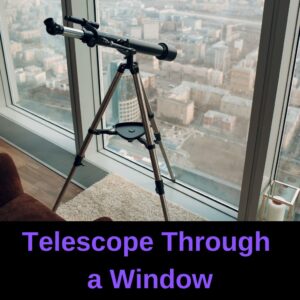This site contains affiliate links to products. I may receive a commission for purchases made through these links.
Have you ever gazed up at the night sky, marveling at its vastness, and wondered about the twinkling patterns of stars? I’ve been there too. It’s an experience that can spark a lifelong interest in astronomy, especially for young enthusiasts.
This article aims to simplify constellation identification, making it accessible and fun for budding astronomers. We’ll break down the complex cosmos into understandable chunks, unmasking the mysteries of the night sky.
Understanding Constellations
Let’s dive deeper, shall we? To understand constellations, it’s crucial to know what they are. Constellations are like a map, a jigsaw puzzle painted onto the canvas of the night sky. Imagine them as connect-the-dot drawings, but instead of dots, we’ve got brilliant orbs of light thousands of light-years away. Each constellation is a specific pattern of stars, as seen from our little blue planet.
To astronomers, both amateur and professional, constellations are much more than mere patterns. Astrologers divide the sky into 88 official constellations, each with a defined boundary. This is more of a grid system which makes it easier to locate and identify celestial objects. However, don’t be daunted by the number 88! For beginners, concentrating on learning some of the simpler and more popular ones can open the door to this cosmic map.
Even though we refer to them as “patterns”, keep in mind that constellations aren’t set in stone. They change as we orbit around the sun and different constellations become visible at various times of the year. This apparent shift is due to our planet’s tilt and orbit. So, with a bit of patience and a lot of enthusiasm, you’ll find that the night sky is a treasure trove waiting to be discovered.
There’s a rich tapestry of stories behind every constellation. In ancient times, people from different cultures saw constellations as figures of myths and legends. These tales turned the vast, daunting night sky into something familiar and navigable. Today, these same patterns help astronomers to locate stars, planets, and galaxies. So, the next time you look up at the night sky, remember that you’re looking at an ancient map, countless light-years wide, with stories as old as human civilization itself.
This cosmic exploration can start right in your backyard. All you need is your bare eye, a lot of enthusiasm, and clear, cloudless nights. A pair of binoculars or a telescope can enhance the experience but they aren’t absolutely necessary. Stay tuned for the upcoming segments where I’ll delve into how to identify constellations and their associated stars.
Basic Tools for Constellation Identification
Identification of constellations may seem like a complex task. But don’t worry, we’ve got you covered! Let’s dive in and uncover some basic tools that can make the process of identifying constellations much easier for you.
In the world of astronomy, a clear night sky is your first and most important tool. All the other tools can only enhance your experience, but it’s important to remember that a clear night sky is fundamental. Overcast skies obfuscate star patterns making it tougher to identify constellations. So remember, having a good weather forecast is as vital as any other tool in your astronomy kit!
Moving on to physical tools, a simple star chart or star wheel should be your next pick. These handy devices can help identify which constellations are visible at any given time of the year. They’re inexpensive and easy to use – and a great starting point for any young astronomer.
If you want to step up your stargazing experience, consider getting binoculars. They might not seem like an astronomy tool, but they can help bring stars into better focus. Binoculars offer a wider field of view, making it easier to locate and identify constellations.
The ultimate tool for exploring the night sky is, without a doubt, a telescope. It makes distant stars and constellations appear closer, helping you explore them in greater detail. However, telescopes can be a hefty investment. So, while they provide the best view, they’re not necessary for someone just starting out in astronomy.
But note, tools can’t beat knowledge. Even with the best tools, you won’t get far without understanding basic star patterns and celestial movements. So ensure that you couple your astronomical equipment with sufficient knowledge and understanding of the constellations.
Let’s press on to learn how to use these tools effectively and become a young astronomy champ! Some hands-on tips await in the upcoming sections.
Learning the Constellation Shapes
While recognizing constellations might seem daunting at first glance, with a little practice, it’ll become much easier. Let’s break down the process into simple, manageable steps.
To start your star journey, focus on a small selection of constellations. The Big Dipper, Orion, and Cassiopeia are excellent choices because of their distinct shapes and bright stars.
You can often spot The Big Dipper high in the northern sky. It’s shaped like a pot with a long handle. Orion, also known as the Hunter, features a distinct line of three stars that form his belt. Meanwhile, Cassiopeia is reminiscent of a ‘W’ or ‘M’, depending on the time of year.
Here’s a simple guide to help you recognize these constellations:
| Constellation | Description | Prominent Stars |
|---|---|---|
| Big Dipper | Shaped like a pot with a long handle | Dubhe, Merak, Phad |
| Orion | Resembling a hunter, has a distinct belt of 3 stars | Betelgeuse, Rigel, Bellatrix |
| Cassiopeia | Forms a ‘W’ or ‘M’, depending on the season | Schedar, Caph, Ruchbah |
But how will you find these constellations in the vast night sky? Below are a few tips:
- Start simple. Train your eyes to observe the night sky’s overall pattern. Look for star patterns or shapes that stand out.
- Use your star chart or wheel. Pay attention to the section of the wheel that correlates with the current date and time. That’s the section of the sky you should focus on.
- Try using a stargazing app. Plenty of good apps make constellation identification a breeze. These apps overlay the constellations on the real-time night sky and include myth backgrounds and other fun facts. Perfect for young astronomers who want to make learning enjoyable!
Remember, you’re not expected to learn all constellations in a night. Give yourself time to become familiar with the sky. It’s about consistency, not instant grasping! Let’s continue our learning journey in the next section, where we’ll delve into more detail about other important constellation patterns.
Recognizing Common Constellations
After honing the basics, it’s time to dive deeper into the specifics. Recognizing common constellations can be a challenge, but with a bit of guidance, it’s surely manageable. Trust me, I’ve been there.
Firstly, it’s crucial to point out that constellations don’t appear in the same place throughout the night. As Earth rotates, the stars appear to move. So, if you’re planning an evening of stargazing, you must be aware of this.
Most importantly, when looking for constellations, you should focus on well-known and easy-to-identify patterns like Orion, Ursa Major (the Big Dipper), and Cassiopeia. These constellations are noticeable in many parts of the world throughout different times of the year.
Orion is one of the easiest constellations to discern, with three bright stars forming Orion’s belt. Ursa Major, home to the Big Dipper, is a helpful guide. Two stars at the edge of the dipper’s ‘bowl’ always point directly at Polaris, the North Star.
Cassiopeia, logged as a W- or M-shaped constellation, is another familiar face in the night sky. It’s found close to Polaris and therefore holds a relative position opposite to the Big Dipper.
For the fresher astronomers, star charts or stargazing apps can be extremely helpful. They provide a virtual map of the sky, hinting at precisely where to look. There’s something pleasing about looking up, knowing exactly what you’re seeing, isn’t it?
Take my advice: Practice makes perfect. Don’t be disheartened if you’re unable to identify them immediately. It takes time, but it’s a fascinating journey, full of awe and wonder. Stay tuned for more detailed insights into each of these constellations and how to navigate using the stars. It’ll be an adventure you won’t forget.
Interactive Activities for Young Astronomers
While identifying constellations using a star chart or an app can be thrilling, it’s not the only fun and educational way to get to grips with the night sky. Interactive activities not only make learning more enjoyable but they also help in enhancing one’s understanding. Let’s take a look at a couple of these stargazing games and activities that could make your astronomical journey more fascinating.
Stargazing Scavenger Hunt
One of the most exciting interactive activities is a Stargazing Scavenger Hunt. With a list of constellations, stars, and celestial bodies, challenge yourself to find each one. To make it more competitive and fun, involve friends or family. You’d be amazed to feel how eagerly you’ll be looking forward to nightfall each day!
Construct a Star Wheel
Another activity that both educates and entertains is constructing your own star wheel. It’s a hands-on activity that helps in understanding celestial coordinates and the motion of stars. When you’re the one charting the constellations, they’re likely to stick in your memory!
- Draw a circular map of the stars
- Secure it onto a bigger circle, marked with months and days
- Rotate your map to mimic the rotation of the Earth.
No matter the activity, remember to mix it with consistent practice, patience, and plenty of looking up. There’s no shortcut to becoming a proficient stargazer but these activities should make the journey more enjoyable. Keep your eyes on the cosmos, and before you know it, you’ll have a sky full of friends in the constellations. You’ll find further guidance on creating your own star wheel and understanding celestial coordinates in the next section of the article.
Conclusion
With patience and practice, you’ll soon be picking out constellations like Orion, the Big Dipper, and Cassiopeia with ease. Remember, it’s not about rushing to recognize every star pattern in the sky. Instead, focus on a few constellations and get to know them well. Use tools like star charts or stargazing apps to aid your learning.
And don’t forget to make it fun! Interactive activities like a stargazing scavenger hunt or crafting a star wheel can be both entertaining and educational. Keep practicing and you’ll be a young astronomer in no time. Stay tuned for more tips on creating a star wheel and understanding celestial coordinates. Happy stargazing!





